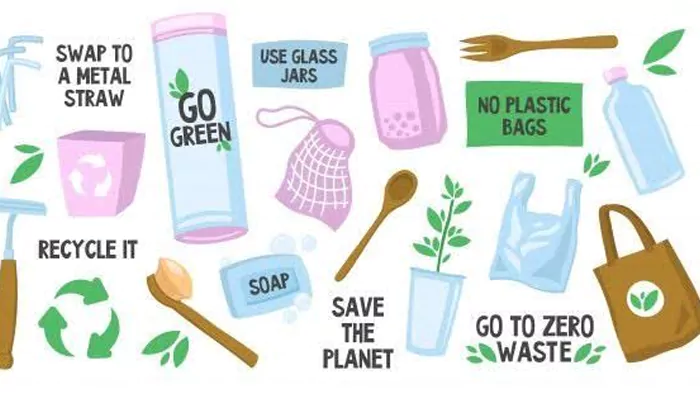Tomorrow's Reality: 2024 Becomes Hottest Summer Since 1850; 10 Climate Change Consequences We Can’t Ignore
- Soham Halder
- 1 year ago
- 5 minutes read

Over the last couple of years, one topic that has been trending globally is heatwave and associated change in the nature.
Summer 2024 is making people's life unbearable. The result of climate change and global warming is much more visible in 21st century. Extreme heatwave is often considered as silent killer. We, the humans are to blame for this heatwave. In a recent report, the European Union's climate change monitoring service revealed some shocking heatwave trends.
“The boreal summer of June to August this year blew past last summer to become the world's warmest,” the Copernicus Climate Change Service (C3S) said in a monthly bulletin.
"During the past three months of 2024, the globe has experienced the hottest June and August, the hottest day on record, and the hottest boreal summer on record," said C3S deputy director Samantha Burgess.
The world is experiencing its hottest northern hemisphere summer since 1850, the year when record keeping of temperature officially started. Let's explore major consequences of this heatwave and climate change on environment and animals.
Global average sea levels rose to 3.2 inches since 1994, this can put 6.4 million people at risk pic.twitter.com/z8iMl6mYdf
— Sophia Kianni (@SophiaKianni) July 10, 2023
Credit - @SophiaKianni X handle
Sea Level Rise:
From melting glaciers to expanding ocean water, impact of climate change is gradually contributing to rising sea level. Since 1870, sea level has increased by 7.5 inches globally. As per recent studies, global sea level is projected to rise by 1 to 4 feet by 2100.
Stronger, Intense & Frequent Hurricanes:
With rising climate change, the intensity and frequency of extreme climatic events like cyclones or Hurricanes will increase. Due to ocean warming, Atlantic hurricanes will increase. Climate models predicted an sharp rise in occurence of the strongest (Category 4 and 5) hurricanes associated with rainfall.

More Droughts:
Rising temperatures due to climate change are making dry regions more drier and wet regions more wetter. As more water is getting evaporated faster with global warming, moisture content in soil is decreasing.
Longer Wildfire Season:
Global rise in temperature have intensified wildfire seasons. By around 2050, the amount of land consumed by wildfires are projected to increase by 30%. Be it climate change-driven or man-made, wildfire is always associated with economic impact if not contained at initial phase.
Changes in Precipitation Patterns:
Patterns of rainfall and storm events are likely to alter due to climate change based on season and region. The ‘heavy’ rainfall events will increase in most regions, while storm will shift poleward. The intensity of rainfall will be more pronounced in tropical as well as high-latitude areas.
Arctic sea ice is declining by 13% a decade
— GO GREEN (@ECOWARRIORSS) March 21, 2023
Arctic is warming 4 times faster than rest of world and in some places 7 times faster
Without Arctic sea ice to reflect heat back into space, global warming is turbo charging impacting entire planet from Jet Stream to ocean circulation pic.twitter.com/DJZznMzFcw
Credit - @ECOWARRIORSS X handle
Ice-Free Arctic Region:
Arctic sea ice content is already decreasing. The snow-ladden area in Northern Hemisphere has reduced since 1970. During this and next century, it is projected that sea ice will decline, glaciers will shrink, snow covered area will decrease.
For a rise in 2°F, there will be a decrease of 15% of the extent of Arctic sea ice, confirmed by United States Environmental Protection Agency (USEPA) study.
Shift in Ecosystem Characteristics:
Climate has always a crucial impact on ecosystems. Changing climate may enforce species to move towards higher latitudes or higher elevations with cool temperatures. Due to sea level rises, some species have already started relocating or even died. Simply, any change in ecosystem hampers existing food chain which has a detrimental ‘Domino effect’ on other species.
![]()
Increasing Threats to Human Health:
Climate change is associated with global warming, change in rainfall patterns, increasing risks of extreme weather events. These, combinedly threaten human health by deteriorating the air we breathe, the food we consume, the water we drink, as well as the weather we witness. Globally, temperature-related deaths are increasing along with rising cases of asthma or respiratory issues due to air pollution. Similarly, water-borne and vector-borne diseases are on the rise too. It's not the case for only developing countries, developed nations too are facing the wrath of climate change.
Impact on Agriculture:
Global warming-driven water shortage is causing an increased risk of agricultural droughts affecting crop yields. Moreover, extreme climatic events are either destroying or making fisheries and livestock less productive.
This image breaks me. At 2.7 degrees of warming, which is our present policy trajectory, two billion people will be exposed to extreme heat.
— Jason Hickel (@jasonhickel) August 6, 2023
99.7% of those people live in the global South. People who have done nothing to cause this crisis. The injustice is staggering. pic.twitter.com/ncL3IOVyvb
Credit - @jasonhickel X handle
Impact on Economy:
In simple words, agriculture needs water, which is getting depleted due to rising demand, population, and climate change. As the water storage recharge is becoming uncertain due to lack of rainfall, the crisis is increasing harming agriculture-dependent economies like India. As per latest models, the U.S. stands to suffer most economic losses due to climate change, followed by India. According to the Climate Transparency Report, “India could lose 5.4% of its GDP due to declining productivity from excessive heat.”
A recent USEPA report mentioned: “Increases in average global temperatures are expected to be within the range of 0.5°F to 8.6°F by 2100.”
The severity of climate change will depend on human activities. More the amount of greenhouse gas emissions, more will be damaging effects. So, if we can reduce emissions, we may avoid some impacts.












